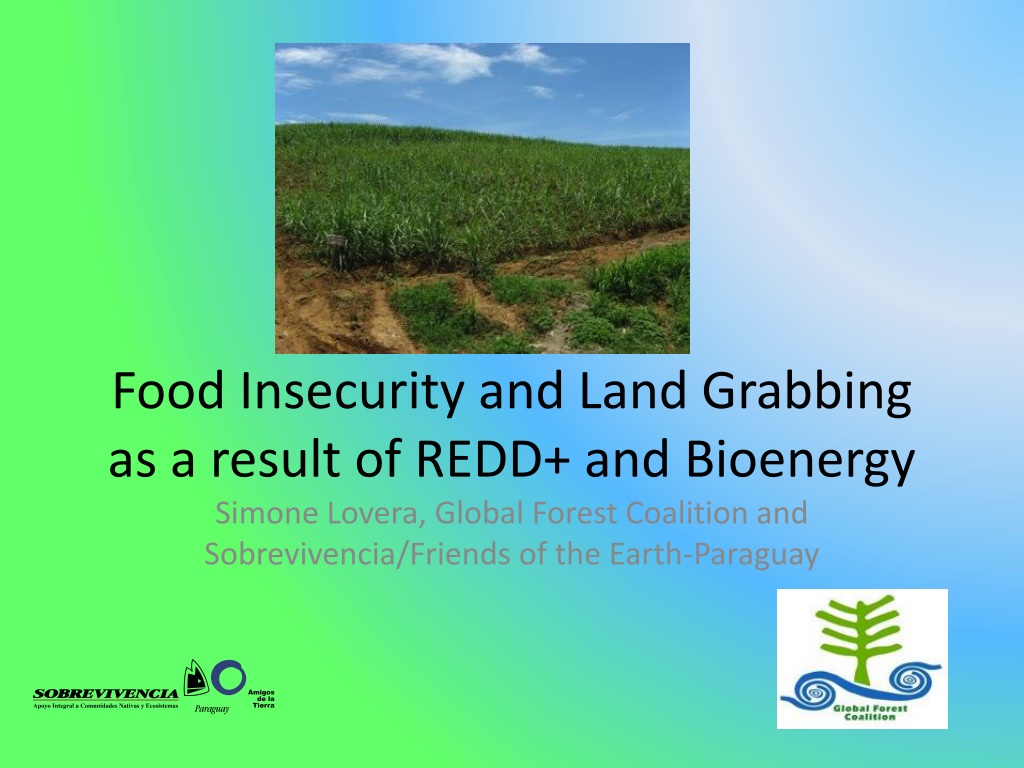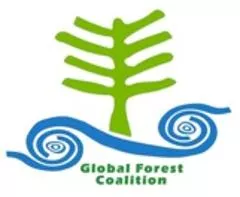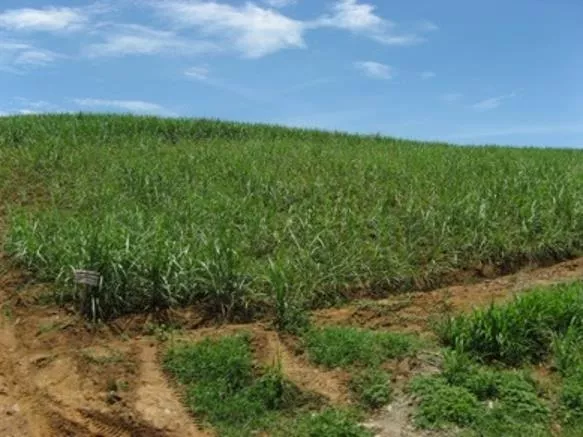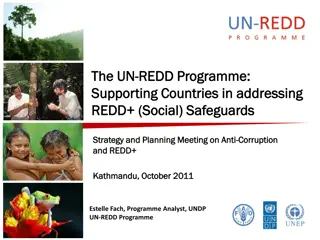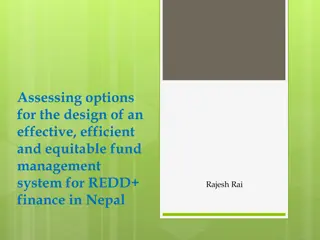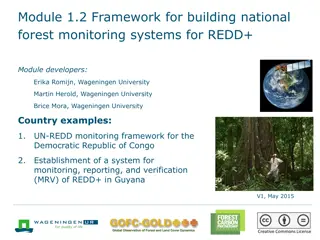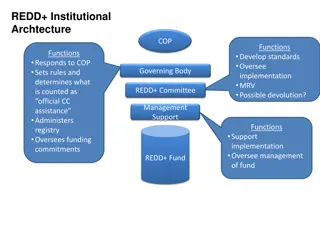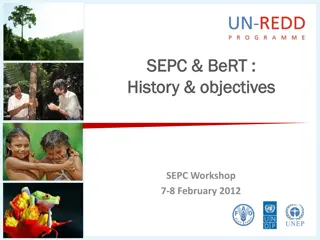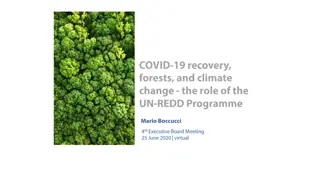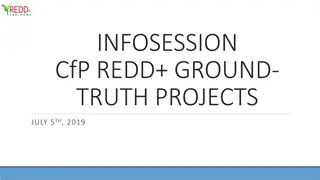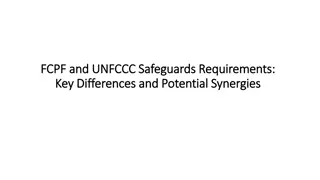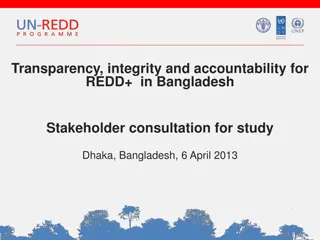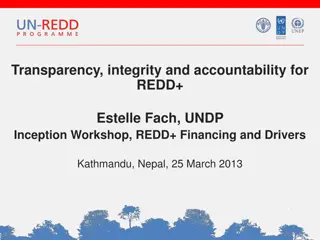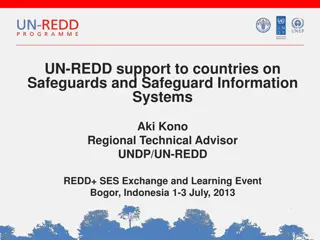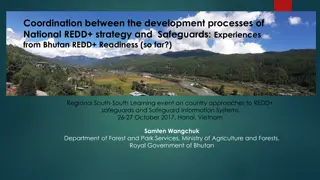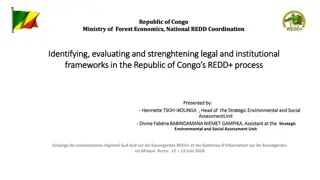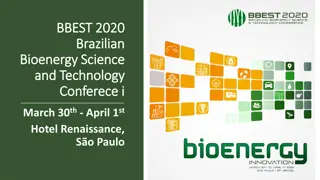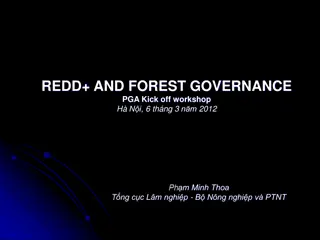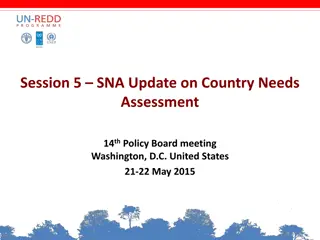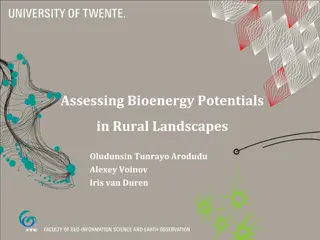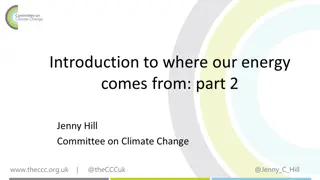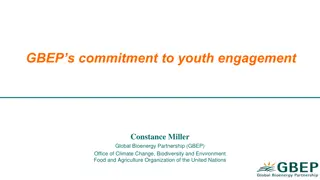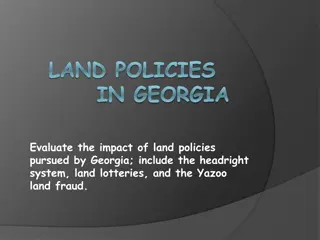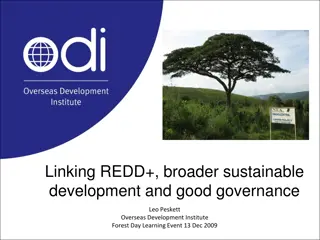Impacts of REDD+ and Bioenergy on Food Security and Land Grabbing
The drivers of forest loss, including demand for wood and land, conflict over land tenure, urbanization, industrialization, corruption, and climate change, are explored in relation to food insecurity and land grabbing caused by initiatives like REDD+ and bioenergy. Increasing competition for land between carbon storage in forests and agricultural productivity raises concerns about food security. The influence of change mitigation on food prices, creation of extra demand through biofuels, and price volatility in agricultural markets further exacerbate these issues.
Uploaded on Sep 27, 2024 | 0 Views
Download Presentation

Please find below an Image/Link to download the presentation.
The content on the website is provided AS IS for your information and personal use only. It may not be sold, licensed, or shared on other websites without obtaining consent from the author. Download presentation by click this link. If you encounter any issues during the download, it is possible that the publisher has removed the file from their server.
E N D
Presentation Transcript
Food Insecurity and Land Grabbing as a result of REDD+ and Bioenergy Simone Lovera, Global Forest Coalition and Sobrevivencia/Friends of the Earth-Paraguay
Getting to the Roots: The drivers of forest loss Demand for Wood Demand for Land Conflict over land tenure Urbanization, industrialization Corruption Poor planning, lack of political will and capacity Lack of livelihood options Climate change Unsustainable consumption www.globalforestcoalition.org
The Risks of Using Land as a Climate Mitigation Option (REDD++++)
Influence change mitigation on food prices FAO submission to UNFCCC 2011: Already biofuels (a mitigation response measure) from food crops were associated with spiking food prices in 2007-2008. While different country contexts result in different impacts, biofuel crops can potentially result in competition for land and water resources with food crops and removal of potential food from food systems. of land-based climate [On REDD+:] Countries will increasingly have to grapple with competing land-uses and to explore measures to achieve a desirable balance among carbon storage in forests, increased agricultural productivity and the safeguarding of food security.
Influence bioenergy on food prices Creates extra demand: Biofuels represent extra demand on land and crops, which are then diverted away from food production. Strengthens link between food prices and oil prices: because oil is no longer solely an agricultural input, it is also now an output from agriculture. The FAO summarises this relationship as follows: A further source of price volatility is the expanding production of biofuels based on agricultural feedstocks, which could tighten the link between prices of agricultural commodities, especially maize, and developments and conditions in international energy markets, implying an increased transmission of fluctuations in energy prices onto markets for agricultural and food commodities . Strengthens links between prices of individual crops: because all these crops are competing against each other for the biofuels market. Further tightens the market for individual crops: when the supply and demand equation is tight , as it is for many food crops, a small amount of extra demand can cause a big inflation in prices if there is no leeway in the supply to meet the extra demand. Mandates, obligations and subsidies distort the market: Forced increases in biofuel use distort the market meaning crops are required by national governments to be diverted away from food and into fuel leaving a decreased supply for food.
Price Volatility in Food and Agricultural Markets: Policy Responses policy paper published for G20 in May 2011. http://ictsd.org/downloads/2011/05/finalg20report.pdf Recommends: G20 governments remove provisions of current national policies that subsidize (or mandate) biofuels production or consumption. At the same time, governments should: - Open international markets so that renewable fuels and feed stocks can be produced where it is economically, environmentally and socially feasible to do so, and traded more freely. - Accelerate scientific research on alternative paths to reduced carbon emissions and to improved sustainability and energy security. - Encourage more efficient energy use, including in agriculture itself, without drawing on finite resources, including those needed for food production.
High food prices mean: More forest loss. E.g meat price up with, means it is far more attractive to convert forests .. .And far more expensive to convince cattle ranchers not to deforest through payments for environmental services (/REDD+) In general, they increase land conflicts as marginal lands become more interesting to farm But most importantly: Food prices have pushed 44 million more people into extreme poverty (World Bank)
Example: Isabela Bio-ethanol plant in San Mariano, the Philippines
Green Futures Investment Inc. and Ecofuels (subsidiary) Plant expected to be operational in March 2012 By then they need 11000 ha. of sugarcane within 40 km from the plant to be economically viable (total agricultural area in San Mariano: 29000 ha. Rest is degraded and primary forests) The project will produce approx. 10% of the 500 million liter bio-ethanol per year target of the Philippine government Project is in process of CDM registration San Mariano was chosen due to availability of marginal land . Philippine policy prohibits conversion of food crops into biofuels, but many current lands are former food production areas. The rest are forest regeneration areas.
REDD+ and Bioenergy Triggering Land Conflicts
Converting forest regeneration areas (SIFMAs): IEDD. Sometimes for only 3 years sugarcane production. How to address permanence in bioenergy schemes?
Increased risk of landslides in a typhoon prone area reduced climate resilience
Conclusion: we need a comprehensive view on land, taking into account all land-related rights and needs, while carbon markets and the FCCC in general provide a square view.
